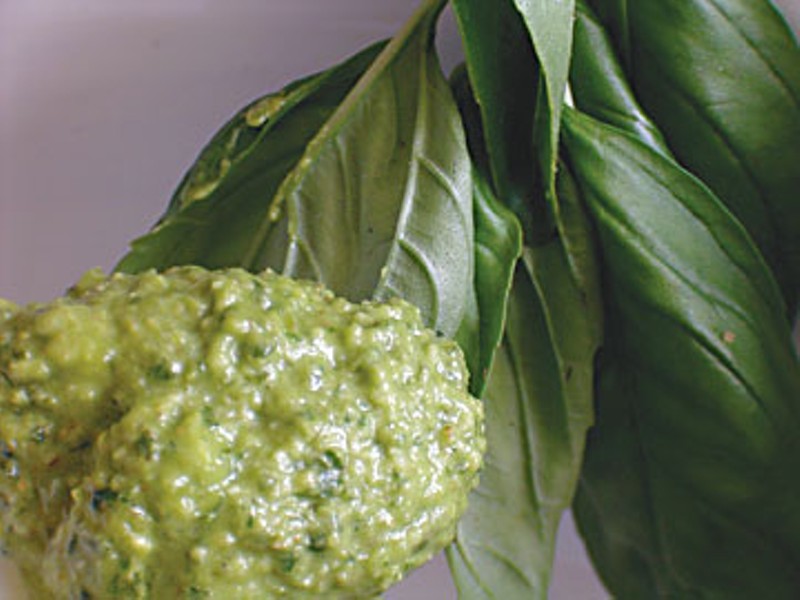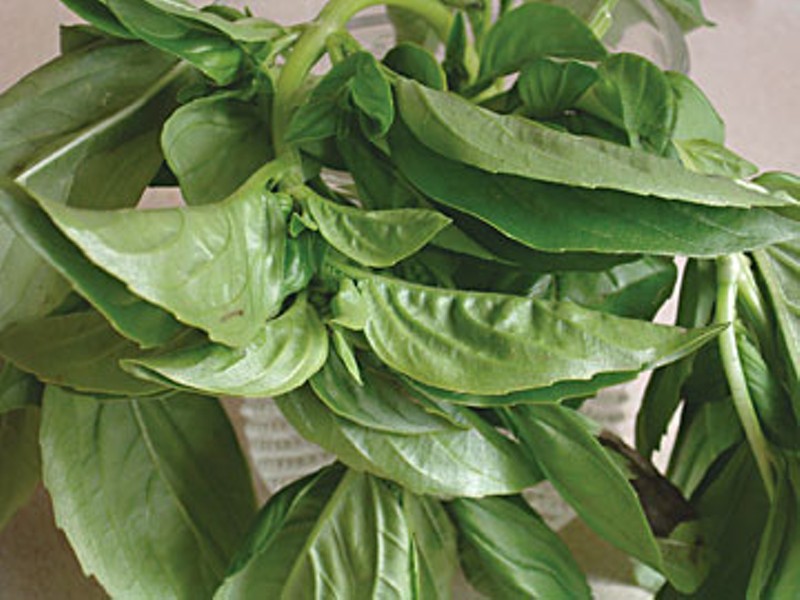Have you ever wondered about the origin of Italian food words that have gained common currency in this country? Even if your answer is no, you may find the following linguistic morsels appetizing.
carpaccio
I love Venice, I love everything about Venice and being in Venice in any season. And I like the painter Vittore Carpaccio (c. 1465-1526). Once, during a visit to that fabled city, I spent some time in the Scuola di San Giorgio degli Schiavoni museum in solitary admiration of Carpaccio's vibrant paintings, observing their intriguing details, delighting in his art.
I did not know then that there was a connection between Carpaccio and carpaccio. The connection is Giuseppe Cipriani, who, in 1931, together with Harry Pickering, founded Harry's Bar, a restaurant and bar located not far from St. Mark's Square. On the Cipriani's website (www.cipriani.com), Giuseppe's son, Arrigo, says that his father created carpaccio in 1950, inspired by Countess Amalia Nani Mocenigo, to whom the doctor had prescribed a raw meat diet. The color of the meat reminded Cipriani of the brilliant reds of Carpaccio's paintings, so he named the dish after the painter. (The same text references a great Carpaccio exhibition held in Venice. According to other sources, such event took place in 1963.)
The website also describes the sauce Cipriani used in his carpaccio, a combination of homemade mayonnaise, Worcestershire sauce, fresh lemon juice, milk, salt and freshly ground white pepper. The sauce was drizzled over thinly-sliced raw beef controfiletto (strip loin, or shell loin) in decorative patterns, "Kandinsky-style" (to remain in the realm of painting).
Nowadays, the word carpaccio is used to describe all sorts of dishes with a raw main ingredient (fish, various vegetables, even fruit). And the seasoning of beef carpaccio is, in my experience, often different from the one described above. Nowadays, you usually get olive oil, a bit of lemon juice and shavings of parmigiano. That is reminiscent of carne all'albese, meat in the style of Alba, another Italian dish that uses raw beef as main ingredient -- finely chopped or thinly sliced, seasoned with olive oil, lemon juice and shaved white truffle. Alba, a town in Piedmont, is in fact famous for the precious underground fungus.
bruschetta
This simple dish is popular in central Italy, where I grew up. Bruschetta comes from the verb bruscare, which, in this context, means to toast. If I tell you that in Italian the consonant group sche is pronounced ske, you should get a sense of how the word bruschetta sounds in its native milieu. I was a bit disappointed in finding that the Merriam-Webster Dictionary lists first a pronunciation with she, giving the one with ske as an alternative, without explaining that the latter is how the word is pronounced in the word's native language.
Back to tangibles, my personal idea of bruschetta is the following: Cut a 1/2 inch thick slice from a loaf of country-style (maybe homemade) bread, and toast it (over hot coals if possible), so that it is crisp outside, but still soft inside. Rub half a clove of garlic on one surface. I keep a light hand in this step, because I don't like a strong garlic flavor. Add salt to taste, and finally drizzle extra-virgin olive oil over it. Enjoy, oily fingertips being part of the pleasure.
The flavor of bruschetta depends heavily on the flavor of the olive oil, so it is important to choose one of good quality. In fact, a great way to taste new olive oil is in bruschetta. I am aware that many more elaborate variations on the theme are offered in restaurants, but I am partial to the minimalist recipe. Simple is often so much better.
pesto
The first published recipe of Pesto alla Genovese appeared in the book La Cuciniera Genovese (The Genoese Female Cook) by Giovanni Battista Ratto (1863). The name pesto comes from the past participle of the Italian verb pestare (to pound). Pesto is made by placing the ingredients in a marble mortar. I've read that once basil leaves are added, circular movements of the wooden pestle against the sides of the mortar are preferred to pounding: They are applied until the sauce attains the desired consistency.
The traditional recipe requires the Genovese cultivar of sweet basil (Ocimum basilicum). I have never tried to make pesto with other types of basil, but I have tried using other herbs. The early recipe for pesto actually mentions parsley and marjoram as possible ingredients. Having a ready supply of both herbs in my little garden was a strong inducement. The result was certainly different, but still excellent. The flavor of pesto depends on the flavor of the basil used, but the quality and quantity of the other ingredients play an important role in highlighting the taste of the herb, while at the same time providing different nuances. The first published recipe included formaggio d'Olanda (Dutch cheese) among the ingredients, together with parmigiano. Pecorino from Sardinia later took the place of Dutch cheese.
The recipe I follow (adapted to the use -- I hereby confess -- of a food processor) yields enough pesto for two batches of pasta. I therefore divide it into half and use one immediately to season a pound of linguine, and freeze the remaining half for later use. I have not checked with the pesto authorities whether freezing is allowed: I suspect it would be frowned upon. However, I like to have a small stash in the freezer. Preparing a dish with green pesto can help chase away winter blues and restore faith in the arrival of the fair season.
A final bite. In March of 2007, the first Pesto World Championship was held in Genoa. The event was repeated this year and the winner was James D. Bowien, a young American chef of Korean origin. Bowien learned to master the use of mortar and pestle to make pesto at Farina Focaccia & Cucina Italiana, a Ligurian restaurant in San Francisco, from Genoese executive chef Paolo Laboa, who follows his mother's recipe. The next edition of the championship will be in 2010.
In this recipe, inspired by that of the Pesto Championship, I use walnuts instead of imported pine nuts and a food processor instead of mortar and pestle.
Championship Pesto
Ingredients:
2.5 oz. basil leaves, washed in cold water and patted dry
1 big or 2 small fresh garlic cloves
1/3 cup walnuts, lightly toasted
1 teaspoon salt
2 oz. freshly-grated parmigiano
1 oz. freshly-grated pecorino
1/4 cup + 1/2 tablespoon extra-virgin olive oil
Mince the garlic and nuts in the food processor.
Add the salt and basil leaves, start the food processor again.
When the basil starts dripping a bright green liquid, add the cheeses.
With the food processor running, slowly add olive oil.
Process only until blended to avoid overheating the mixture by attrition.
Do you have an Italian food word you are curious about? E-mail it to [email protected]. I will do my best to tell you the story, if I can weave one.


Comments